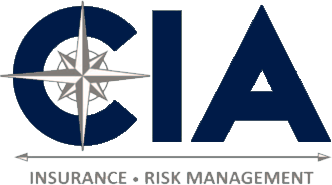Workplaces need strategies to appropriately evaluate and manage employees who have signs and symptoms after receiving a COVID-19 vaccine. Occupational health programs and public health officials can use these strategies, which apply to employees [ 1 ] working in various settings. This information is applicable for 1–3 days after a healthcare worker or other employee receives a vaccine dose. This approach minimizes the number of employees who are unnecessarily excluded from work, reducing the possibility of disruptions in workplace operations. The approach also aims to reduce the spread of COVID-19 and other infectious diseases that can happen if employees who should be excluded from work are allowed to work. These recommendations are based on the current understanding of signs and symptoms following COVID-19 vaccination and might change as we learn more about how COVID-19 vaccines work in real-world conditions. These considerations may be adapted for a variety of workplace settings. Post-vaccination considerations are also available for residents of long-term care facilities.
Overview
After COVID-19 vaccination, employees might have some side effects. It is normal for these to occur. Common side effects include pain, redness, and swelling in the arm where they received the vaccination, as well as fever, chills, tiredness, headache, nausea, and muscle pain. Clinical trials found that most signs and symptoms:
- Are mild to moderate in severity
- Occur within the first 3 days of vaccination (the day of vaccination and the following 2 days, with most occurring the day after vaccination)
- Get better within 1–2 days
- Are more frequent and severe following the second dose of an mRNA vaccineand among younger people compared to those who are older (>55 years)
Cough, shortness of breath, runny nose, sore throat, or loss of taste or smell are not consistent with post-vaccination symptoms and instead could be symptoms of COVID-19 or another infection. Find a summary of more information on post-vaccination symptoms for Pfizer-BioNTech, Moderna, and Johnson & Johnson’s Janssen COVID-19 vaccines.
It might be challenging to tell the difference between some post-vaccination signs and symptoms from signs and symptoms of COVID-19 or other infectious diseases. Employees with signs and symptoms in the first 1–3 days after vaccination could be mistakenly considered infectious; this could unnecessarily restrict them from work. This might have negative consequences for employees, customers, and workplaces. Strategies are needed to effectively manage post-vaccination signs and symptoms and limit unnecessary work restrictions.
While experts learn more about the protection that COVID-19 vaccines provide under real-life conditions, it’s important to continue using all the tools available to control this pandemic. Employers should continue to follow the Guidance for Businesses and Employers Responding to COVID-19, and healthcare employers should follow the Interim Infection Prevention and Control Recommendations for Healthcare Personnel During the Coronavirus Disease 2019 (COVID-19) Pandemic.
Considerations to Minimize the Effect of Post-vaccination Signs and Symptoms on Employees and the Workplace
- Encourage employees to get vaccinated as soon as they are eligible and to consider scheduling vaccination appointments 1–2 days before planned days off from work.
- Stagger vaccination appointments so that you are not vaccinating all workers at the same time in a
single department, service, or unit where continued operations are required. Staggering vaccination might be more important following receipt of the second dose of an mRNA vaccine(e.g., Pfizer-BioNTech, Moderna), when symptoms after vaccination, like fever, are more likely to occur.
- Inform employees about the potential for common side effectsafter vaccination and provide information about what to do pdf icon[212 KB, 46 pages] if they experience side effects.
- Provide or identify options for COVID-19 viral testing, so it is accessible for employees with systemic signs and symptoms after vaccination. Consider implementing an approach to testing based on the guidance for select non-healthcare workplacesor healthcare workplaces. Testing should have rapid turnaround time from specimen collection to result reporting (<24 to 48 hours).
- Offer flexible, nonpunitive sick leave options (e.g., paid sick leave) for employees with systemic signs and symptoms after vaccination.
How to Assess and Respond to Post-vaccination Signs and Symptoms in Employees
These approaches apply to employees who have received COVID-19 vaccination in the prior 3 days (including day of vaccination, which is considered day 1) and are not known to have had an exposure to COVID-19 in a community, non-healthcare workplace, or healthcare setting in the last 14 days. Employees experiencing symptoms who have had an exposure to someone with confirmed COVID-19 in the last 14 days should be excluded from work and evaluated for COVID-19.
Tailor the approaches suggested in the table below to fit the characteristics of the specific case and the workplace.
Do not attribute positive viral COVID-19 test (nucleic acid amplification test or antigen test) results to COVID-19 vaccination. Vaccination does not influence the results of these tests.
Signs and Symptoms Not Typical after COVID-19 Vaccination
ANY signs consistent with COVID-19 (e.g., cough, shortness of breath, runny nose, sore throat, loss of taste or smell)
Suggested Approach
Exclude from work pending evaluation by a healthcare provider for potential causes, including SARS-CoV-2 infection, as appropriate. Criteria for return to work depend on the suspected or confirmed diagnosis.
Employees with confirmed or suspected COVID-19 should isolate at home, follow CDC-recommended steps, and not return to work until they meet criteria to discontinue home isolation, (or return to work, if healthcare personnel) in consultation with healthcare providers. Unvaccinated workplace contacts should be notified and advised to quarantine and self-monitor for symptoms.
Signs and Symptoms Could Be from COVID-19 Vaccination, Infection with the Virus That Causes COVID-19, or Another Infection (e.g., Influenza)
ANY general symptoms (e.g., fever (100°F/ 37.8°C or higher), fatigue, headache, chills, and body aches)
Suggested Approach
Employees who meet the following criteria may be considered for return to work without testing [ 2 ] for COVID-19:
- Feel well enough and are willing to work, and
- Do NOT have fever, and
- Do NOT have other signs and symptoms of COVID-19, including cough, shortness of breath, sore throat, or change in smell or taste.
If symptoms do not improve in 2 days, employees should be excluded from work and COVID-19 testing should be considered.
Employees with fever should, ideally, be excluded from work pending further evaluation, including consideration for COVID-19 testing. If an infection is not suspected or confirmed as the source of their fever, they may return to work when they feel well enough.
In critical infrastructure settings where staffing shortages are anticipated or occurring, employees with fever and only signs and symptoms that are typical following vaccination can be considered for work if they feel well enough and are willing. If fever does not resolve in 2 days, these employees should be re-evaluated and considered for COVID-19 testing.
Note: The following signs and symptoms alone are not consistent with COVID-19 and should be managed per usual protocols for vaccine-related side effects:
- immediate hypersensitivity reactions (e.g., urticaria [hives], anaphylaxis)
- local symptoms (e.g., pain, swelling, or redness at injection site)
Adverse events that occur in a recipient following COVID-19 vaccination should be reported to the Vaccine Adverse Event Reporting System (VAERSexternal icon). Vaccination providers are required by the Food and Drug Administration to report vaccine administration errors, serious adverse events, cases of multisystem inflammatory syndrome, and cases of COVID-19 that result in hospitalization or death following COVID-19 vaccination under Emergency Use Authorization. Reporting is encouraged for any other clinically significant adverse event even if it is uncertain whether the vaccine caused the event. Information on how to submit a report to VAERS is available on the websiteexternal icon or by calling 1-800-822-7967.
Comments are closed.




